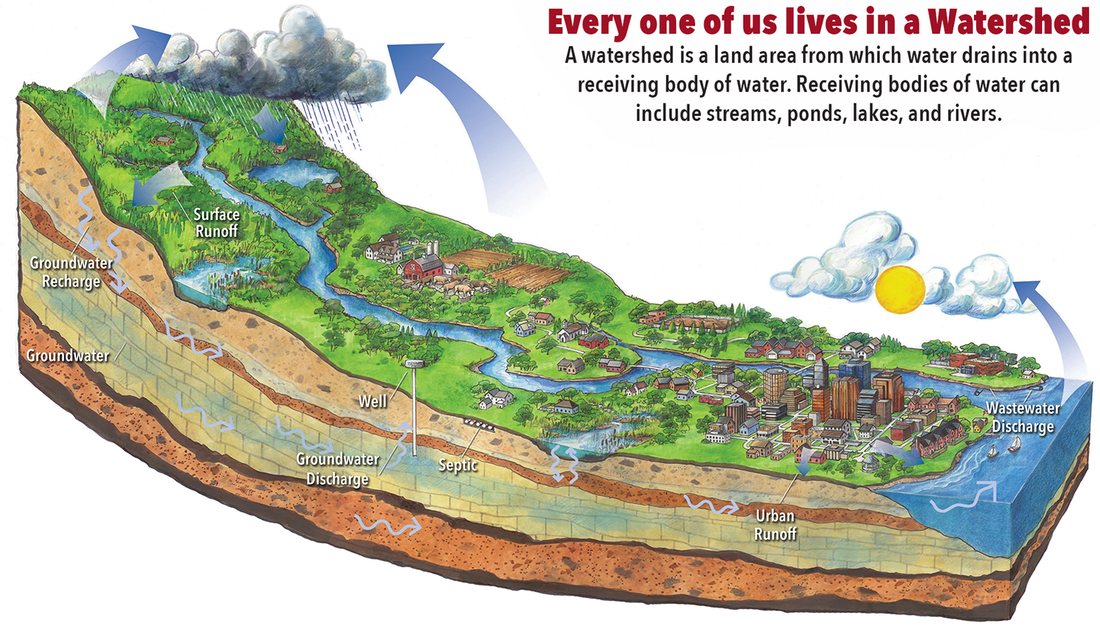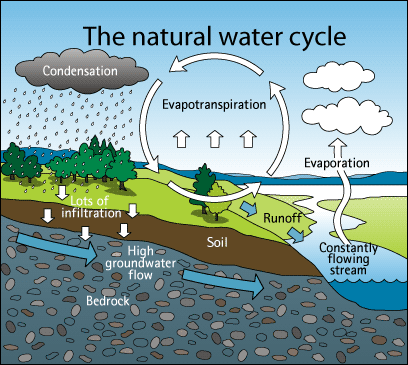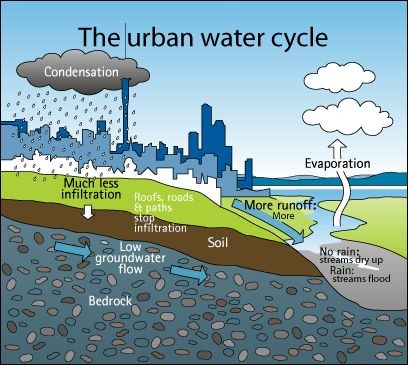What is a Watershed?
The bigger picture of stormwater runoff!
Watersheds
Water follows gravity, flowing from high to low. A watershed is an area of land where all the water—rain, snowmelt, or streams—drains into a common body of water, such as a river, lake, or ocean. Watersheds can be small, like the land feeding into a single creek, or large, covering multiple states and flowing into major water bodies like the Mississippi River.
Everything that happens in a watershed—pollution, development, deforestation—affects the water quality downstream. That’s why protecting watersheds is crucial for clean water, healthy ecosystems, and flood prevention.
Every body of water has a watershed, and everyone lives in a watershed! We live in the La Crosse Pine Watershed which covers an area of approximately 1,622 square miles in western Wisconsin and eastern Minnesota.

Natural Watersheds
In a natural watershed, the environment absorbs and filters water because the land is pervious.
Forests, prairies, and soil soak up rainwater, slowing it down and reducing runoff. Wetlands and floodplains hold water like sponges, trapping pollutants and replenishing groundwater. Vegetation and tree roots help filter out contaminants before the water reaches rivers, lakes, or streams.
In a forest, only 10% of rainfall becomes runoff, while 50% is absorbed by trees and 40% returns to the atmosphere through the water cycle. When left undisturbed, natural watersheds help prevent flooding, keep water clean, and support diverse ecosystems.

Urban Watersheds
An urban watershed is an area in a city or town where water flows across the land and drains into rivers, lakes, or other water bodies. Unlike natural watersheds, where soil and plants soak up rainwater, urban areas have impervious surfaces like roads, sidewalks, and buildings that do not absorb water.
Instead, rainwater and melted snow become runoff, moving quickly across hard surfaces. This water flows into storm drains, ditches, and nearby rivers—often carrying dirt, oil, and other pollution with it. In an urban watershed, 30% to 50% of rainfall turns into runoff, compared to much less in natural areas.

Because water can’t soak into the ground, urban watersheds are more likely to have flooding, erosion, and water pollution. Green spaces, rain gardens, and permeable pavement can help absorb water and reduce runoff, keeping urban watersheds healthier.
A Watershed is a System
This is how stormwater runoff is made, but there is still more to the story. Our watershed is both natural and urban, and the water cycle within it is dynamic. Continuing learning about stormwater runoff and the water cycle to see how your impact truly makes a difference!
